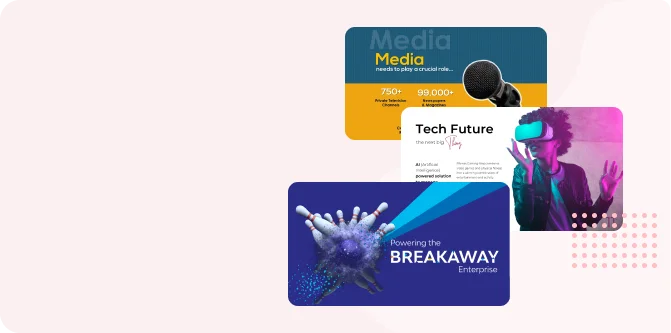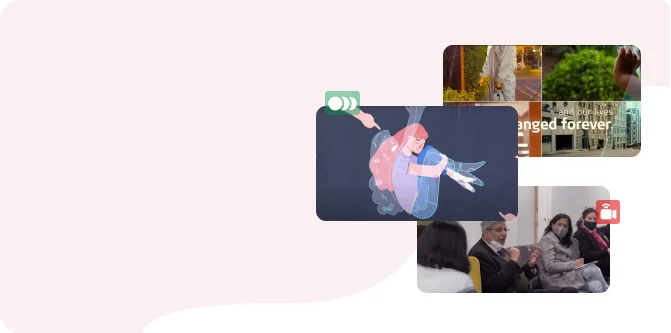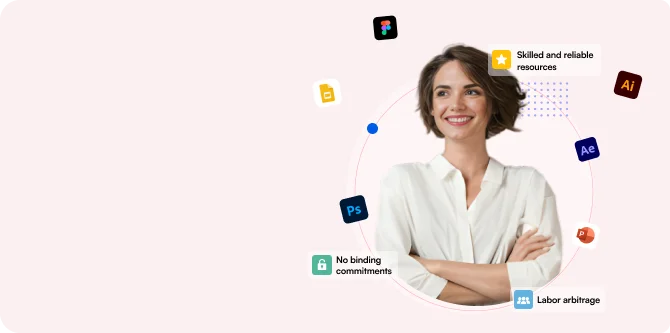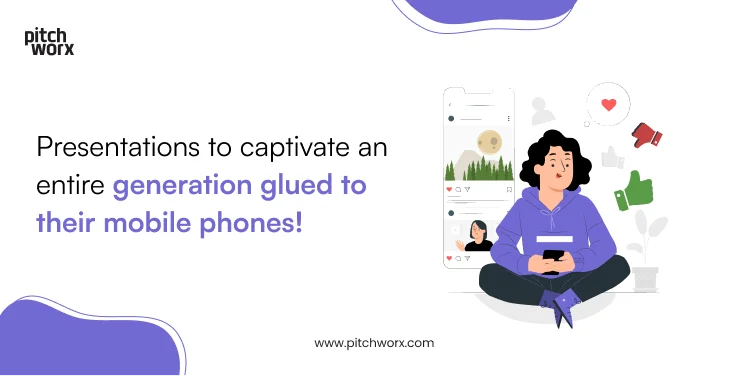Data is exploding all around us. As analysts and professionals aiming to guide business strategy and decision-making, making sense of endless spreadsheets and databases may fill your days. You may pore over the numbers, trying to glean insights that will create those lightbulb moments for your teams and executives.
But tossing more data and charts into your presentation risks losing your audiences in a fog of complexity. Even the clearest data story can get bogged down and diluted when shared through walls of text, tables, and graph overload.
The key is transforming your data findings into digestible visual narratives that inform and inspire. By combining art and science, we can learn to showcase data through visually striking and intuitive presentations that enlighten audiences rather than overwhelm them.
The power of visual storytelling
Impactful data storytelling is about using the power of visuals to spotlight your central data narrative to achieve outcomes like:
- Illuminating key trends and patterns
- Painting a clear picture of situational analysis
- Spotlighting outliers, opportunities, and risks
- Inspiring discussion and strategic decisions
When visualized the right way for its context, even highly complex data can create those sought-after “ahh, I get it!” moments that catalyze change.
But bereft of narrative, even the most beautiful visualizations fall flat. The art is in weaving data graphics into an insightful story that guides audiences effortlessly towards your key findings and takeaways.
Crafting visual flow
Just as novels aren’t written as one dense block of text, impactful data slides aren’t overloaded haphazardly with charts and graphs.
The savviest data visualizers intentionally choreograph slides to walk audiences through:
- Key questions to be addressed
- Data findings and analysis
- Insights, recommendations, and conclusions
This transforming of data into narrative flow allows audiences to extract meaning effortlessly.
Strategic techniques like animation, annotated highlighting, and smart build sequences allow piece-by-piece reveal of findings. Audiences stay engaged as new depths of understanding are uncovered step-by-step.
Let visuals do the heavy lifting
As the saying goes, a picture is worth a thousand words. Lean into this for simplicity’s sake by:
- Explaining graphs visually first before text blocks
- Using icons, maps, photos and illustrations over words
- Balancing text density with ample negative space
Remember, text complements visuals, not overwhelms them. Use visualizations as your workhorse to convey complexity and patterns at a glance. Reserve text to briefly caption, summarize, clarify and call attention to key data markers.
The visual toolkit
With endless options for visually encoding data, best practices dictate using the simplest, clearest visuals depending on data types. Your visual hierarchy can follow:
- Bar charts for categorical data comparisons
- Line graphs to showcase trends and trajectories
- Pie charts to depict part-to-whole relationships
- Scatter plots and bubble charts to reveal correlations
- Tables for precise data points and figures
Of course, exceptions abound, especially for more complex datasets. But your first instinct should always be the simplest, most recognizable visuals to clearly showcase the story in your data. Your audiences will thank you by better absorbing insights, engaging with content, and making informed, empowered decisions.






